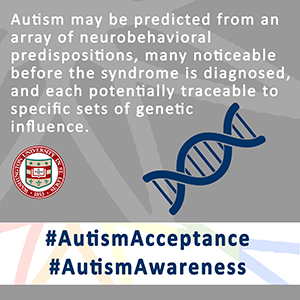Deconstructing Autism: from unitary syndrome to contributory developmental endophenotypes
April 26, 2018
![]() https://www.tandfonline.com/doi/full/10.1080/09540261.2018.1433133
https://www.tandfonline.com/doi/full/10.1080/09540261.2018.1433133

|
A recent generation of family studies has revealed that autism can be predicted from an array of neurobehavioral susceptibilities that are appreciable before the syndrome is diagnosed, and that each may be traceable to partially-independent sets of genetic variation. Some of these liabilities are not necessarily specific to ASD-those that are non-specific could account for a significant share of the ‘missing heritability' of autism, would (by definition) contribute to pleiotropy, and relate to so-called ‘co-morbidities', which are inappropriately named if they actually contribute to (or exacerbate) the severity of autism itself. Linking genetic variants to these underlying traits rather than to a diagnosis of ‘autism' may be more productive in devising personalized approaches to developmental intervention, especially if autism represents an epiphenomenon of earlier-interacting susceptibilities. In this article, the implications of conceptualizing autism as a syndrome of neurobehavioural degeneration is considered, predicated on the notion that it can arise from a critical co-aggregation of earlier-interacting neuropsychiatric liabilities, the phenotypic expression of which-importantly-can be moderated by sex.







